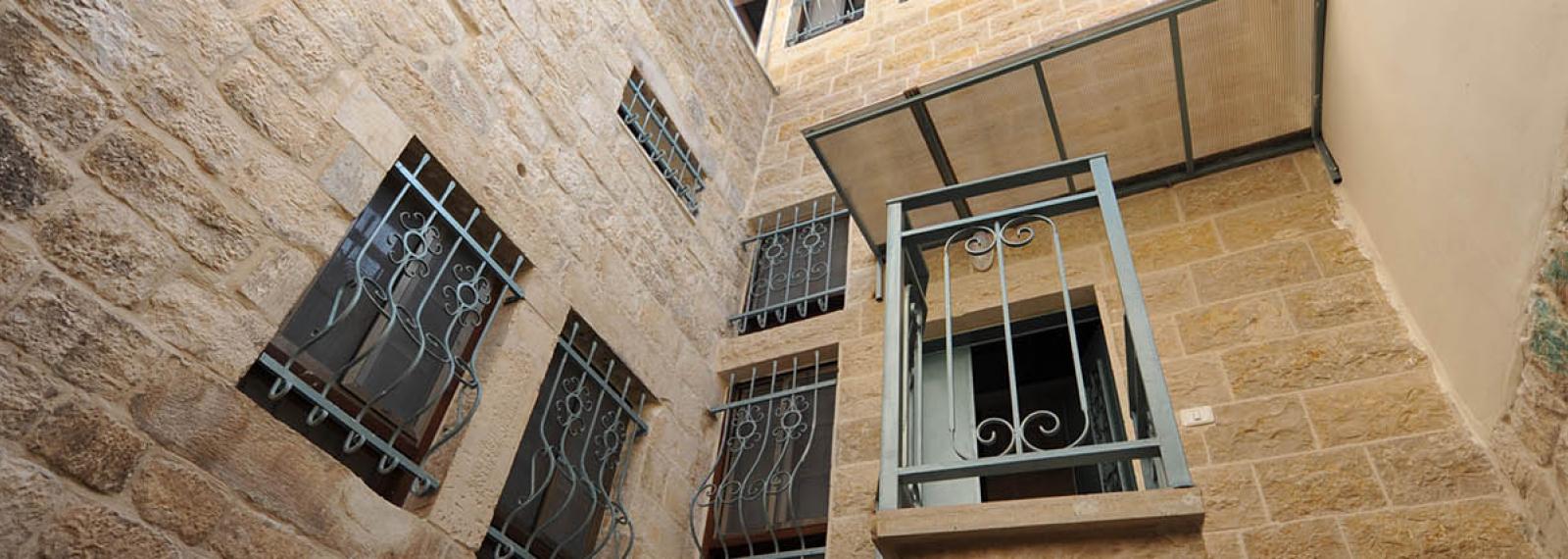
The Technical Office works with property owners and managers, residents and the community at large to meet the needs of all, whether adapting historic buildings for community use, renewing housing or restoring structures. The team is engaged in identification, research, design, contracting, and supervision of implementation of each restoration or rehabilitation project and coordination with the beneficiaries to ensure that international standards and conventions are applied in all stages of restoration work that it undertakes.
OCJRP projects have included the restoration of some of the most famous landmarks in Jerusalem that had fallen into disrepair and neglect through poor infrastructure, pollution and damage from nature and man. Efforts have concentrated on buildings in the environs of al-Haram al-Sharif and in areas such as Aqabat al-Khalidiyya and Bab Hutta that have been identified as among the most threatened and neediest. Projects have included buildings housing educational, cultural, social, commercial, and health services of various Jerusalem institutions. The restoration work has provided more than 71,000 working days for Jerusalem workers.
1. Comprehensive Restoration and Rehabilitation:
Total restoration uses a comprehensive approach to restore residential areas and historic monuments --- from infrastructure to architectural decorative features --- and to rehabilitate their services.
The Dar al-Aytam al-Islamiyya, one of the most impressive structures in the Old City and the largest OCJRP project completed to date, was a 4-year $3.5 million comprehensive restoration project completed in 2004. A former Mamluk palace and pilgrim's hostel with additions from the early Ottoman period, its built-up area of almost 8,000 sq. m. is architecturally rich, with monumental portals, stone decorations, arches, vaults and niches. One hundred years ago Dar al-Aytam was a renowned Islamic print shop and an Arab furniture production center; today the complex houses an academic school, vocational boys' school and workshops, orphans' dormitory, and offices and is well integrated into the community.
2. Adaptive Reuse:
The aim of conservation should be the daily utilization of historic buildings since this integrates the structures into the community and is one of the best methods to protect it against physical damage. Some creative solutions have been found for adaptive reuse of neglected buildings by restoring the structure to use through providing modern facilities while protecting the historic and architectural features.
- an abandoned house was converted into the Old City headquarters for the OCJRP office
- an abandoned ancient stable was transformed into a unique restaurant
- a public khan was adapted for use as al-Quds University Studies center
- an historic building with Byzantine origins was adapted into al-Quds Community Work center.
RESTORATION PROJECTS


